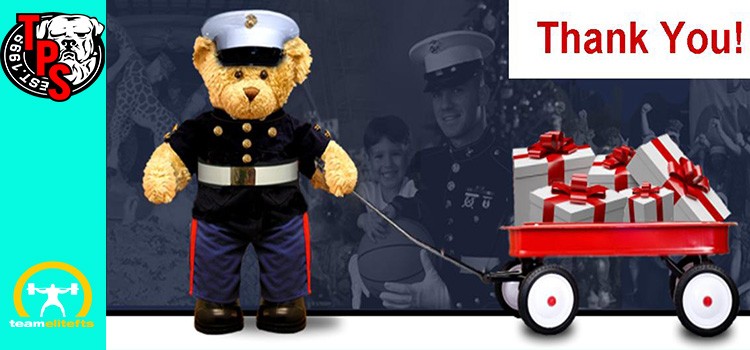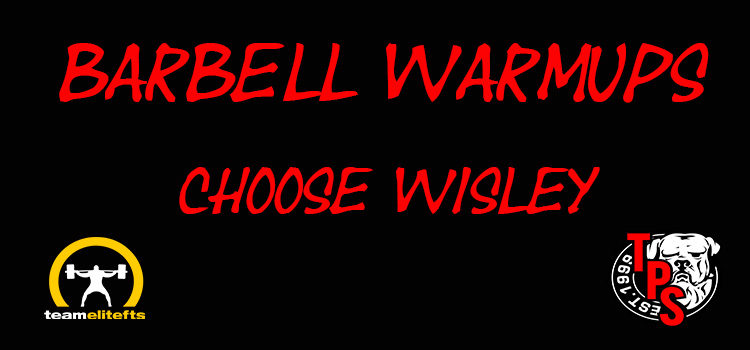
Today I want to go over a subject that can be very confusing for a lot of people, especially those who get programs from apps, online coaches and other sources where this is not listed.
How to choose weights for your barbell warmups.
Your program usually has either percentages to work from or an RPE guideline with most sources, and a lot of times the warm up is your choice because it isn’t listed.
Those new to training will often go right to the work weight assuming that because that is what is in the program, that is what you do.
Or, they do to little, or too much.
At TPS, in the gym, we generally assist our lifters with warmups choices, as we are coaches and that is what we do.
Warmups will not be the same for every person everyday, as sometimes your mobility is off, your recovery is not great or other reasons that can require additional work.
Sometimes you are on fire and don’t need a lot because everything is where it needs to be.
As coaches we identify this and adjust as needed.
What about those who train without a coach in the room?
Confusion can set it in fast.
Today I’ll tell you what we like as a general guideline. And as always, this isn’t gospel, just a guide.
Feel free to adjust as needed, or toss it in the trash and do what you want.
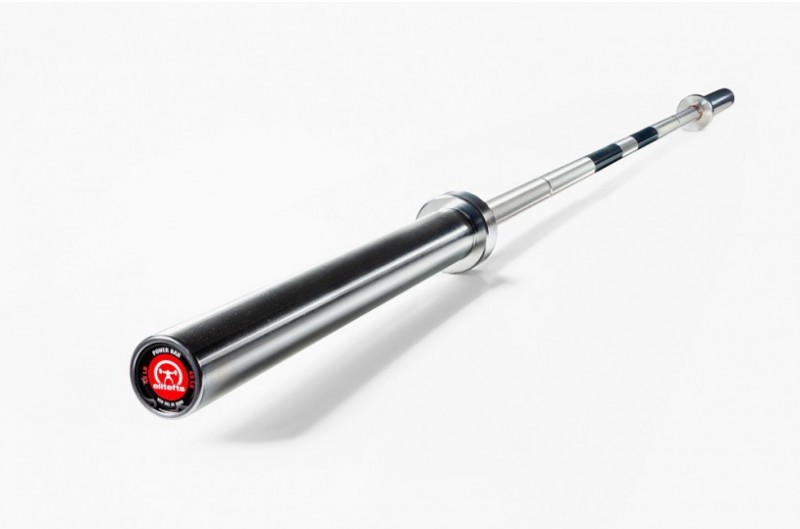
But, choosing barbell warmups well will do a few things for your training:
-
Warm you up
-
Prime your nervous system to fire well
-
Build skill
-
Accrue some volume
-
Prepare you for working weights
-
Not exhaust you to the point where work sets are affected
I want to address two of the things above before moving on:
Build skill:
Warmups build skill because you are practicing the lift with a submaximal weight. This allows you to focus well on the task at hand and make adjustments to form/technique in a controlled environment.
Not knowing how to do this in a controlled (submax) area will lead to massive technical breakdown and most likely injury under a maximal load.
Accrue some volume:
We want to accrue some volume in the warmups, but not too much.
Too much will affect our training today and our recovery tomorrow.
But, just enough will carry over in spades.
Volume makes you strong, it adds muscle and when done right, it complements the above: builds skill.
On reps, I feel that most of your warmups should be singles.
We want to accrue some volume, but not much.
Once you get past the very light sets, singles work great because they give you the opportunity to execute a lift as perfect as you are capable of doing with out accumulating fatigue.
We do not want to accumulate fatigue during warmups!
These are possibly the two most important things a warmup does, at least to me.
Your opinion can vary and as I always say, that’s ok.
Let’s look at two different ways to warm up:
Plates and quarters
Percentages
I like plates and quarters for most.
It is pretty easy to figure out and if you squat over 3 plates per side, it seems to fill in the blanks on its own.
Sure, it is not as precise as percentages, but I don’t believe training needs to be micro-managed.
The other thing it does is add more volume to training, but not so much that it negatively affects most lifters.
I’ll cover that in a bit.
So, for a 500 pound squatter they would look like this:
500 pound max Squat with a 455 working weight for the day:
(NOTE: Tonnage is listed in parentheses after each lift. Tonnage is the total amount of weigh lifted in pounds. We don’t use kilos here.)
Plates and Quarters-the Meathead way
Your warmups will be:
- Bar x 5 x 2 sets (450 pounds)
- 135 x 5 (675)
- 185x 3 (555)
- 225x1 (225)
- 275x1 (275)
- 315x1 (315)
- 365x1 (365)
- 405x1 (405)-last warmup
Tonnage:
450 +675+ 555+225+275+315+365+405=3265 pounds
9 sets
OR:
Use a percentage of working weight as the guide
- Bar x 5 x 2 sets (450)
- 30% 135 x 5 (675)
- 45% 205 x 3 (615)
- 60% 275 x 1 (275)
- 75% 335 x 1 (335)
- 90% 410 x 1 (410)-last warmup
7 sets
Tonnage: 450+675+615+275+335+410=2760
Looking at the above examples, we see the Plates and Quarters way has more sets, and 505 pounds less volume.
Depending on your recovery outside the gym, that 505 can be too much, or the perfect amount to make progress.
Which way is better?
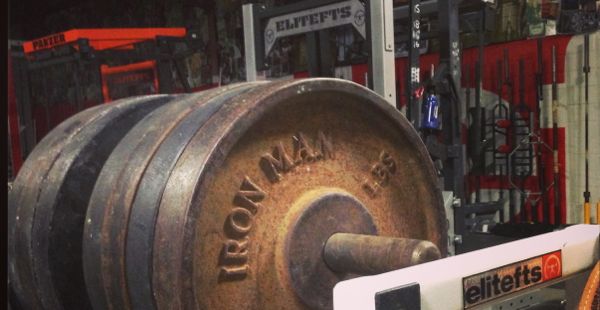
I like the Plates and Quarters and I’ll tell you why.
More chances to be perfect, or more chances to improve.
We all need to improve and this style of warmups gives you the chance.
If you choose rest periods well, the first way will add about 6 minutes to your training session at the most.
How long should you rest during warmups?
Not long.
I would suggest no more than a minute until you get to the heavier weights, and then a little longer.
Two minutes is what we find is the most the majority of lifters need.
Obviously if you Squat 900 pounds you would deviate from this and rest longer, or if you are multi ply you would rest longer as you get to the heavier sets.
Maybe you want to make plate jumps in the early sets and go to plates and quarters as it gets heavier.
Let’s look at a lifter with a much lower squat and see how it would shake out if you can’t use Plates and Quarters.
The Dimes and Fives Method
150 pound max Sqaut with a 135 working weight:
- Bar x 5 x 2 (450)
- 75x5 (375)
- 95 x 1 (95)
- 125x1 (125)-last warmup
Tonnage: 450+375+95+125=1045
5 sets
OR:
Percentages: This way needs snack chips, or 2 1/2's. They are a pain in the ass to find.
- Bar x 5 x 2 (bar is about 30% of 135)
- 45% 60 x3 (180)
- 60% 80x1 (80)
- 75% 95 x 1 (95)
- 90% 120 x 1 (120)
Tonnage: 450+180+80+95+120=925
6 sets
We see a difference in tonnage of 120 pounds with the two examples.
But we see an extra set in the percentage example.
This can be a trade off for the lower number lifter.
Do they do the extra set, or do they get the additional volume?
I think it depends on recovery at that point.
Either way will work, but if recovery is off maybe less volume is better.
So to sum it up, what do I like better?
I feel for most lifters, Plates and Quarters is the way to go, with the bull of your warmup sets being one rep.
I hope I’ve explained this well.
How you do it is up to you and your coach.
And, the percentages I listed are not carved in stone, we have had good luck with them.
There is a lot of art, and some science to this. I think coahing is more Art than science, you’ve got to know the science.
But, as Thomas Dolby said, you don’t want to be blinded by science either.
Did you miss last week’s Log?
Ask me a question-Be sure and Type to Murph in the header
Find me on Google-search for Total Performance Sports Malden, Mass. The Best Gym in Boston, Facebook too.
Oh, yeah, follow us on Instagram too. @TPSMalden
And @tpsmethod
PS:
Don’t forget to check out the tpsmethod.com.
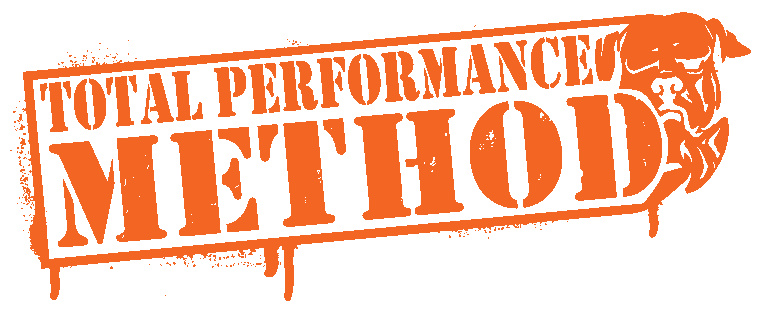
The site is up, running and people are loving it.
It is in BETA mode and we are offering insane membership discounts while we are in BETA.
Why?
We want to allow you to get all of the benefits of the site, but help us develop it in a manner that best suits your needs, so we need users and your feedback.
We will be custom coding a shitload of features based off of our ideas, and what you want.
The site has programming for Beginner and Intermediate Powerlfiting now (almost a year’s worth), will have Advanced programs as well as Multi Ply programming for Beginner through Advanced.
It’s got a full Video Library with Seminars, Courses and Quick Hit videos too.
There is much more inside as well.
Take a look, tpsmethod.com.
Join if you want and save 50% for life.
Unlike Dave, there are more than 3 SPOTS LEFT!
SHARE THIS!
#bostonsstrongest
Vincere vel mori









